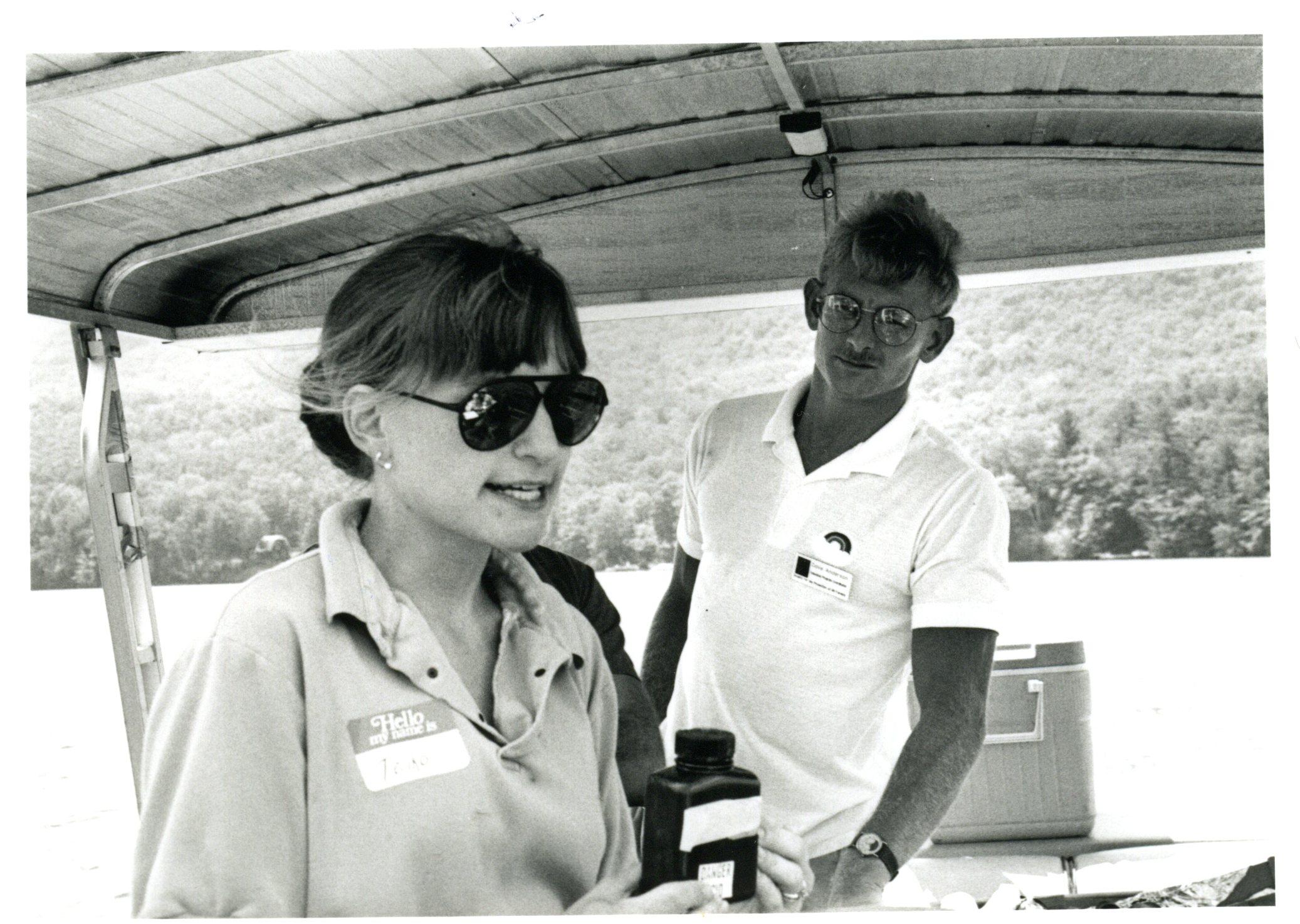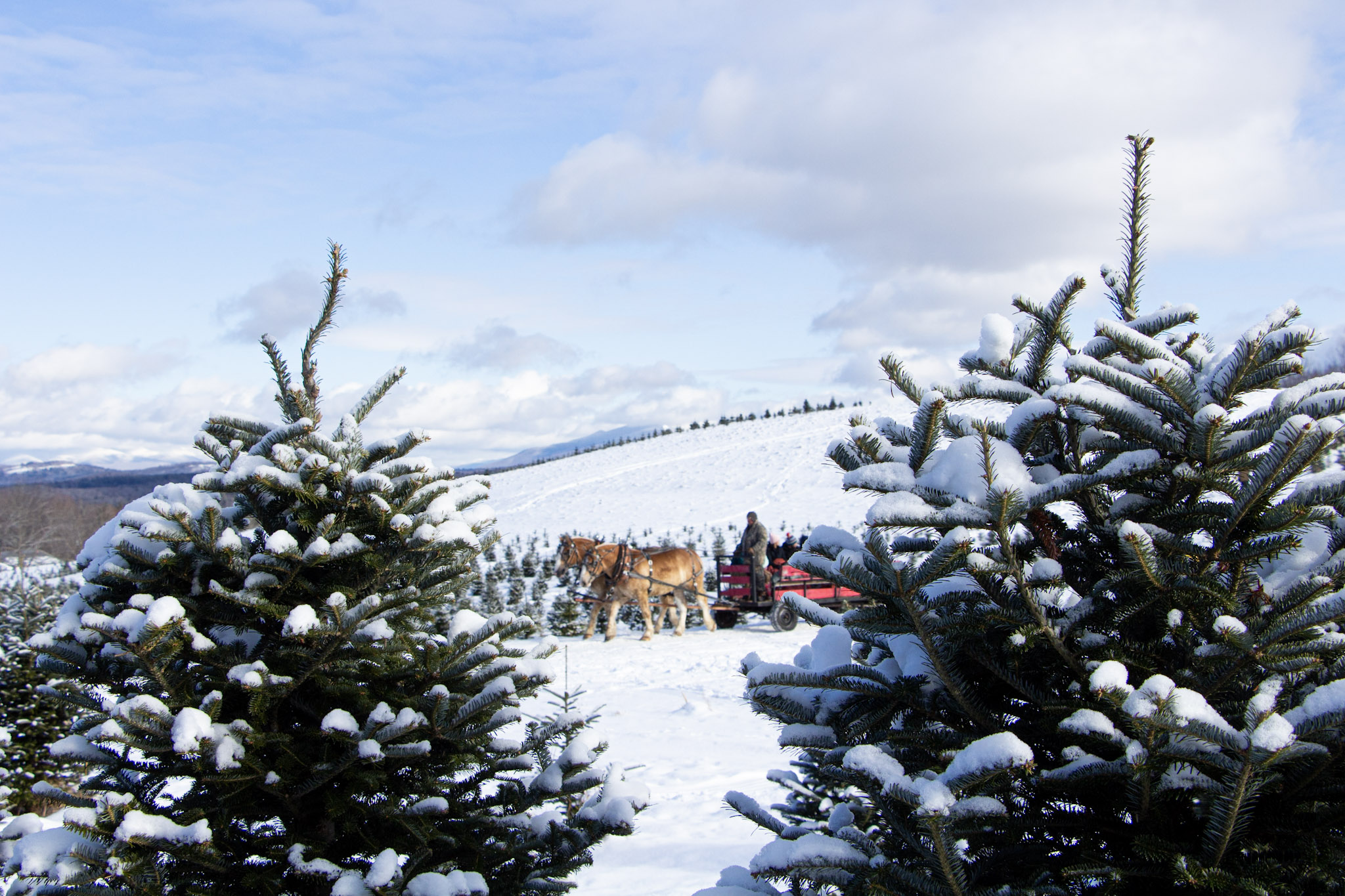- Tags:
- Wildlife,
- Land Conservation,
- Land Stewards

Dave Anderson conducting water testing in 1993 with Lake Sunapee Protection Agency staff
This summer, we’re celebrating a milestone that speaks to dedication, deep knowledge, and a lifelong love of New Hampshire’s forests: Dave Anderson is marking his 35th year with the Society for the Protection of New Hampshire Forests.
Over the past three and a half decades, Dave has served as an educator, storyteller, and advocate—connecting people to the land through writing, public programs, and his unmistakable voice, both on trails and in classrooms. We sat down with Dave to reflect on the journey and ask: What has changed—and what remains worth fighting for?

Q: Looking back, what stands out from your 35 years with the Forest Society?
There are beautiful, quiet places located deep in seemingly unexplored forest recesses—off-trail, almost off-the-map—on larger tracts of conservation land. These are places where the forest speaks, or sometimes whispers. Stone walls cross former pastures, now century-old forests. On Monadnock—one of the busiest hiking destinations in NH—solitude is still possible, if you seek it. Old growth forests in Stoddard are part of a constellation of protected lands around the Charles Peirce Reservation and the wider Monadnock region… the Sunapee-Kearsarge region… the White Mountains. New Hampshire’s deep forests, clean running waters, and dark, star-filled skies are to be cherished and preserved.
Knowing the names and stories of our predecessors, and honoring the legacies they wrote into the landscape, confers a kind of karmic blessing. Forests sustain us emotionally and spiritually. “Home” arrives in the form of early morning Hermit Thrush songs or winter solstice sunsets as early snow begins to fall. These opportunities to spend deep time in the woods, in the company of others who love them too, are among my favorite memories.
Q: What has working in conservation taught you about forests—or about people?
The best part of my work has been the opportunity to meet icons and legends of land conservation, forestry, and natural history education in NH. My current—and many former—colleagues at the Forest Society have been universally dedicated to its mission. They’ve been teachers, mentors, and peers: smart, passionate people committed to NH’s forests, wildlife, land, recreation, and careful stewardship for future generations.
The natural resources community functions like an ecosystem. There are rich relationships and interconnections. Sometimes there’s tension, but cooperation beats competition. NH is a small state; you must learn to work well with others, or your reputation will precede you. While some might define success by “dollars” and “acres protected,” I believe it’s our relationships—our shared love of forests, farms, wetlands, wild places, and well-managed woodlands—that truly unite us. It is, after all, a SOCIETY for the Protection of New Hampshire Forests.
Q: Is there a particular forest or property that’s especially meaningful to you?
The first place that speaks to me is the landscape of the White Mountain National Forest.
The reason it is meaningful is the bold foresight of conservation pioneers – women and men – who worked to see it protected. It is a vast 800,000-acre National Forest which belongs to every American and it defines what New Hampshire means to both lifelong residents and visitors alike. People climb high peaks to look into the distance and to contemplate a vast forested landscape: a priceless heritage and our responsibility to continue to protect.
The second place that speaks to me is my home Tree Farm, on a dirt road just outside a rural, historic village. The Tree Farm is named for the road, which is named for the hill, which is named for the Meetinghouse in the village. It’s all very literal—and very rooted in place.
The reason it is meaningful is because of my familiarity, time-worn footsteps, decades of walking this same property in all seasons. If you know a place intimately, you sense change in real time including subtle, incremental growth of trees and successional changes as white birch, aspen, pine and oak succeed to beech, hemlock, black birch and red maple. Changes include the loss of white ash trees now standing dead and growing threats to the health of beech and hemlock. Some health issues are exacerbated by weather as more frequent rainfall replaces less frequent snowfall. Biological diversity is changing too. Among the first places I notice bird and mammal ranges shifting northward is in my own backyard. The examples are too many to list, but there are both winners and losers as the climate warms and extreme weather becomes more frequent.
Q: You’ve seen a lot of change over 35 years. What makes you hopeful now?
A thing that keeps me hopeful is metaphorical springtime: the optimism and exuberance of youth—and of a youthful, resilient forested landscape.
Edward Abby famously said: “It is not enough to fight for the land; it is even more important to enjoy it. While you can. While it’s still here. So get out there and hunt and fish and mess around with your friends, ramble out yonder and explore the forests, climb the mountains, bag the peaks, run the rivers, breathe deep of that yet sweet and lucid air, sit quietly for a while and contemplate the precious stillness, the lovely, mysterious, and awesome space.”
Never miss the opportunity to go for a walk, take a hike, join a field trip. Bring along a friend and involve children so you are also a mentor and a teacher.
Q: What would you tell someone just starting their conservation career?
While forest fragmentation, subdivision and land development would seem to have been inevitable due to population and economic pressures, land conservation requires intentional foresight. The world we inherit from our elders is imperfect but that is no reason to fail to employ ALL our energy and passion to work to save more land as natural, open space and to care for it.
I have seen how land conservation outcomes can take decades; how transactions transcend generations to reach fruition only when there is a shared conservation ethic. My advice is to share your enthusiasm and work hard to be the change you wish to see in the world. Work with what you have and where you are and seek and enlist friends to build a wider community.
Q: After all these years, what keeps you going?
Forests are the original wellspring of my own inspiration. The natural world is full of metaphor and allegory—time, tides, and seasons. Autumn is followed by winter, and then another springtime. A new sunrise always lies ahead. It’s important to maintain hope and optimism strong enough to pass on your love for forests, mountains, rivers, wetlands, and wildlife to the next generation of conservation leaders. They will need both your example and the tools to carry the work forward.
In times of uncertainty, Dave’s steady presence reminds us that strength lies in showing up—season after season—to care for the land and invite others to do the same.
